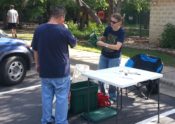
by Paul Schattenberg, Texas A&M AgriLife Communications

Fire ants and their unsightly mounds are reappearing in many Texas neighborhoods. (Texas A&M AgriLife Extension photo)
ROUND ROCK – For more than a decade, Texas A&M AgriLife Extension Service integrated pest management program specialist Wizzie Brown has been engaged in a community-wide battle against one of the state’s most persistent pests – the fire ant.
Since 2005, Brown and residents of the Wood Glen community in Round Rock, north of Austin, have collaborated in a neighborhood fire ant program to control the proliferation of fire ants, eliminate their unsightly mounds and keep them from biting area residents.
“Fire ants roam from yard to yard and have no regard for property lines,” Brown said. “They’re easily dispersed during their periodic mating flights, and a high percentage of mounds in Texas have multiple queens, which can live for two to five years and produce up to 800 eggs per day.”
Multiple queens also means there is no territorial behavior, resulting in excessive numbers of fire ant mounds per area, with many actually spread over larger areas than can be seen.
“To my knowledge, the Wood Glen effort in Round Rock has been the longest-running community-wide fire ant program in the state and probably in the U.S.,” Brown said. “We recently carried out the fire ant baiting portion of the program and held our annual fire ant education day for the community.”
The Wood Glen neighborhood has 548 homes and covers over 250 acres. It includes a community park, green belt and walking trails.
“Originally the community came to me,” said Brown, who has been at the AgriLife Extension office in Travis County for the past 15 years. “I got a call from one of the residents who knew our agency was part of the Texas A&M University System and that we provided information and technical assistance on various quality-of-life topics. They wanted to know if we could help them with their fire ant problem, which was pretty extensive.”
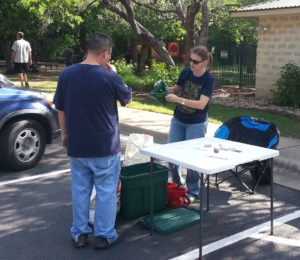
Elizabeth “Wizzie” Brown (right), entomologist and Texas A&M AgriLife Extension Service integrated pest management specialist in Travis County, demonstrates the proper use of a hand-held spreader for a Wood Glen resident during the recent fire ant education day. (Texas A&M AgriLife Extension Service photo)
Brown said she gave a fire ant control demonstration to the residents on the “two-step” treatment method, which is the agency’s preferred fire ant control method. The first step involves semi-annual broadcast applications of fire ant bait. The second step involves follow-up treatments of individual mounds or “nuisance” ant colonies, such as those in sensitive or high-traffic areas.
“The two-step method is less labor-intensive, less toxic and more environmentally friendly than most other means of do-it-yourself fire ant control,” Brown said.
For more details on the two-step treatment method and others, go to the eXtension website at http://bit.ly/2oZoL46 or Texas A&M AgriLife Extension Bookstore at http://bit.ly/2oswCGp.
Brown said similar community-wide fire ant control efforts have also taken place in Bexar and Harris counties in collaboration with the integrated pest management specialists in the AgriLife Extension offices in those two counties.
David Schell, a Wood Glen resident and homeowners association board member, said the treatments in the Round Rock neighborhood have yielded positive results.
“The fire ant program is highly effective at controlling fire ants in both the common areas and homeowners yards,” Schell said. “In the five years I have lived in Wood Glen, I have not seen any fire ant mounds in my yard.”
Brown estimated the overall efficacy of fire ant treatment in the community at more than 99 percent, with “almost zero” sightings of mounds or incidents of children or adults being bitten since treatment began. In addition, a survey Brown conducted on the Wood Glen effort in 2010 documented a 64 percent reduction in pesticide use and $20.73 savings per participating household.
“We only did the front yards with the residents’ permission so they could see what was going on,” Brown said. “They were so pleased with the results they persuaded their homeowners association to put the cost for fire ant control into the budget. Now their homeowner dues pay for two bait treatments per year – one spring and one fall – for the front yards. A few years back, we gave that responsibility over to a pest control company. And each year we also hold a fire ant information day in the community during which we provide information on baits and advice on their proper application for residents who want to treat their backyards.”
Brown said Wood Glen wasn’t the only community in which she and community residents have attempted a long-term fire ant program, but it’s the only one that has lasted.
“We have tried to keep a program going in three of four communities in the Austin area, but they eventually stopped, usually because the community lost the neighborhood ‘champion’ spearheading the effort and the community lost interest,” she said.
Brown said the Wood Glen program’s success has largely been due to active community involvement combined with an engaged homeowners association that has been respectful of residents’ wishes and forthcoming in communications about treatments.
Sam and Leslie Myers, who moved from the Wood Glen neighborhood about four years ago, were involved in fire ant program efforts in the community for about five years.
“There were a lot of stay-at-home moms in the neighborhood and they were tired of their kids getting bit by fire ants both in their yards and the community park area,” said Leslie Myers. “We were the second residents in the neighborhood to take the lead for the program after Wizzie got it started.”
The Myers’ role consisted of coordinating with residents on broadcast baiting timing as well as helping with education day efforts, including providing residents with bait and selling them hand-held spreaders if needed.
“Typically from 100-200 residents came to the community’s fire ant education day,” Sam Myers said.
The Myers also kept the community apprised of their fire ant control efforts through the community newsletter and by giving updates on the program during the annual homeowner association meeting.
“Once the pest control people took over broadcast baiting of the front lawns, they were great to work with and always checked to make sure who had opted out for the treatment,” Leslie Myers said. “And the education day out in the community, where we set up a table and people had to wait in line to get their fire ant bait and spreader, gave residents the opportunity to talk and get to know one another.”
The Myers, who are also Texas Master Gardeners, explained their knowledge of gardening and landscaping was a good tie-in with fire ant control in that it made them aware of beneficial and non-beneficial insects and the need for fewer chemicals in managing their landscape.
In 2011, Brown and her family moved into the Wood Glen neighborhood, where she remains actively involved in the program, providing information and technical assistance, particularly during the neighborhood fire ant education day.
“This is a great family neighborhood and I’m glad I can live here in addition to providing expertise for fire ant control and other aspects of integrated pest management,” she said. “But you don’t need an entomologist living in the neighborhood to have a successful pest management program. All you need is a community champion and people willing to support it.”

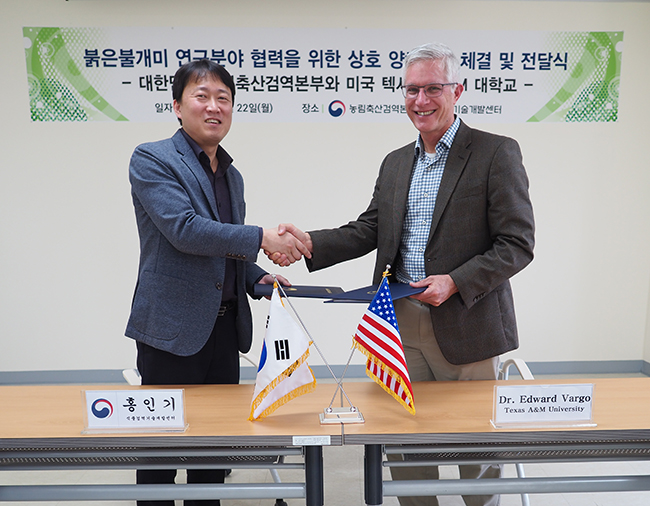
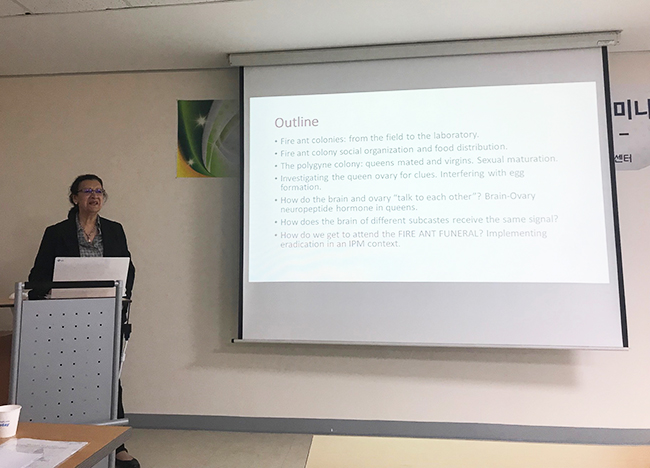


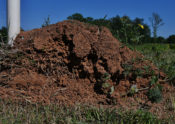




 COLLEGE STATION – Like Old West cattle barons in a B-western, red imported fire ants are expanding their range and increasing their herds while laying wholesale waste to the range, according to an expert on the issue.
COLLEGE STATION – Like Old West cattle barons in a B-western, red imported fire ants are expanding their range and increasing their herds while laying wholesale waste to the range, according to an expert on the issue.